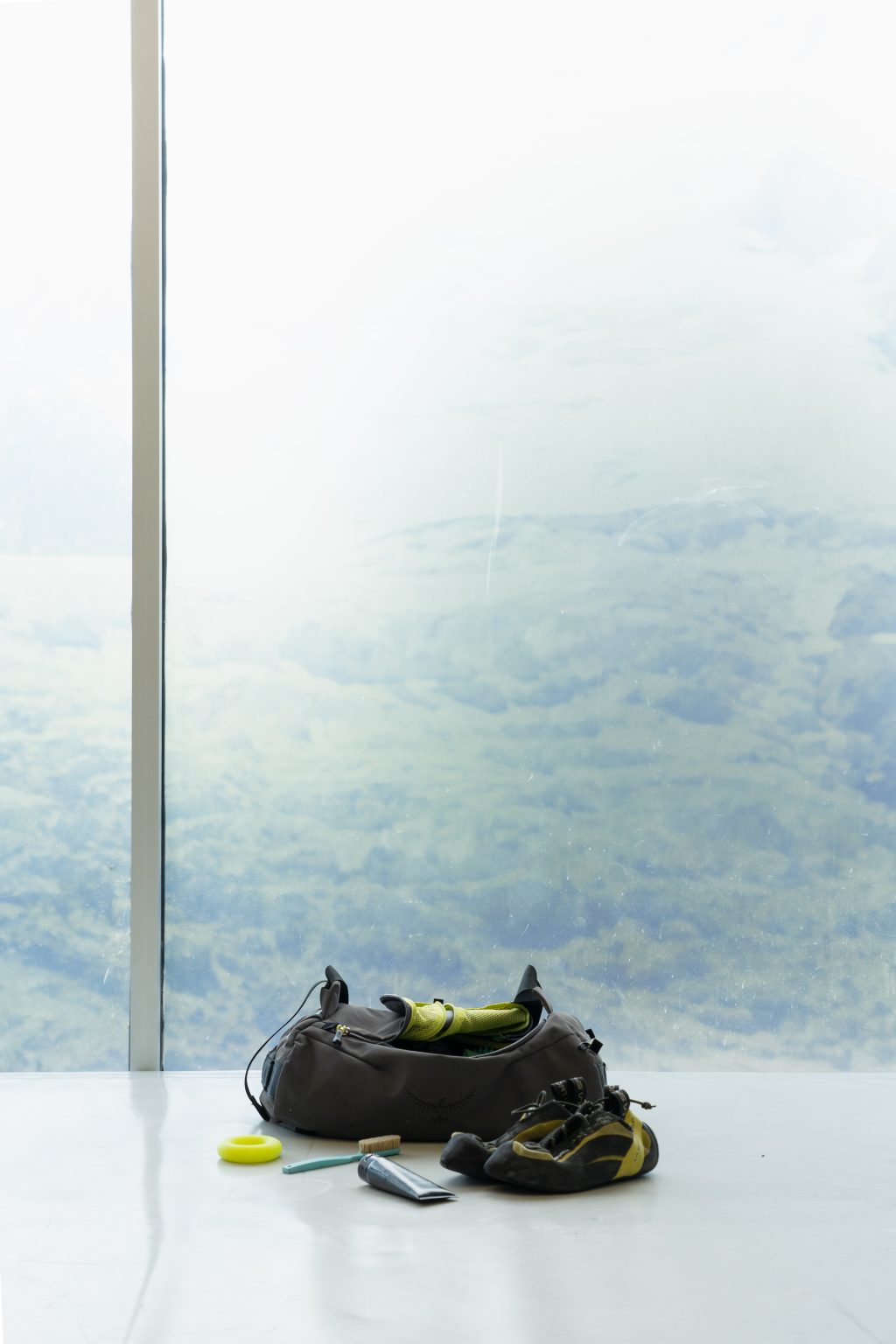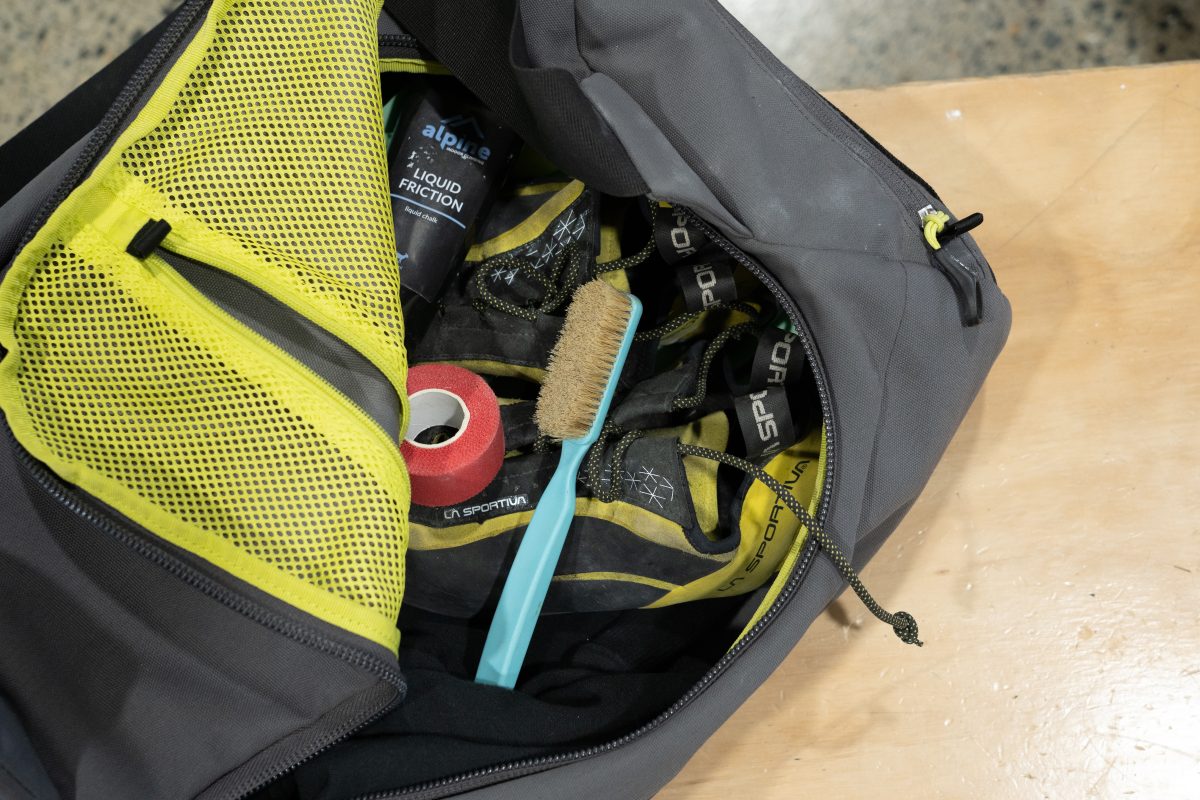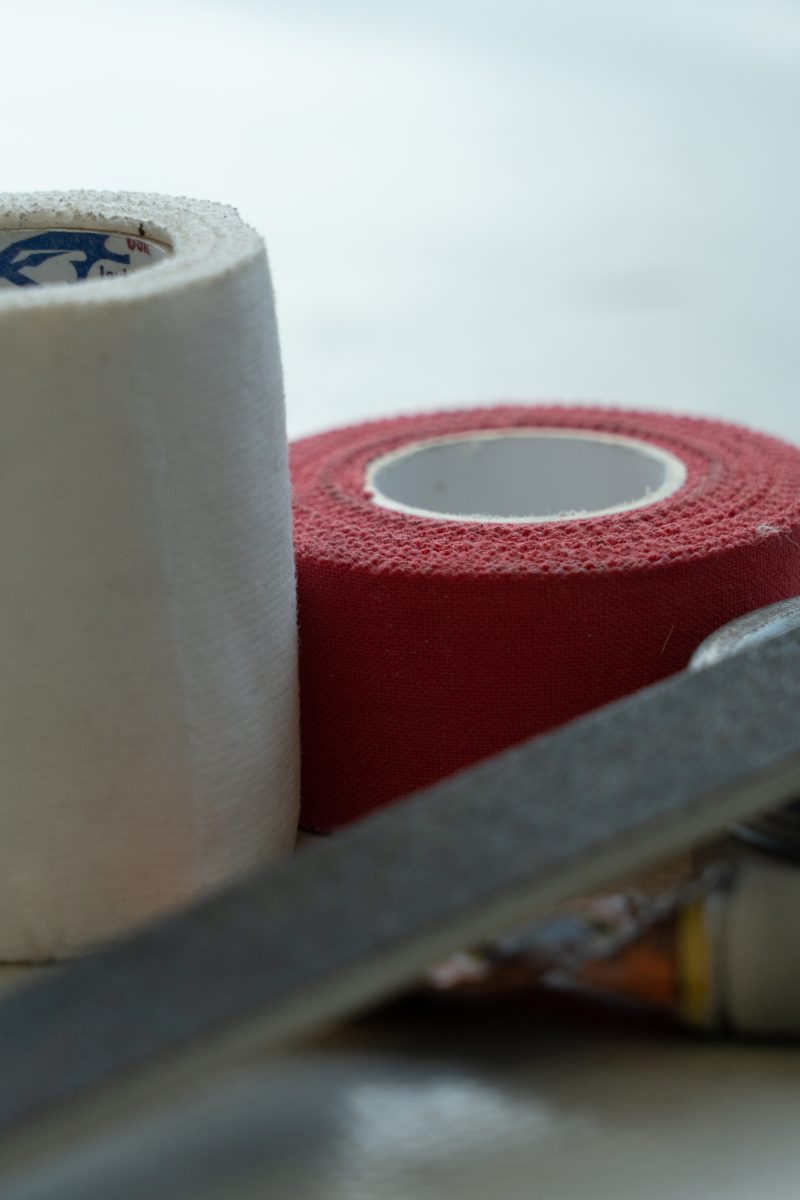Indoor Climbing Essentials

Whether you’ve just clocked off an endless day at the office or a marathon cramming session for upcoming exams, it helps to have a grab-bag with all your climbing essentials. No packing, no thinking or searching for that wandering left shoe – simply grab the bag and make your way to the gym.
When you first start indoor climbing all you’ll need is shoes and chalk, hardly enough to warrant a backpack. But as you ascend the levels of climbing and training a compact gym bag becomes essential for carrying the smaller items you’ll need. So with that said, here are some of the obvious, and not so obvious, essentials that you should have in your gym-bag every session.
THE BASICS
Climbing Shoes
Obvious, but too often forgotten. That’s why it helps to have an indoor-specific pair of climbing shoes in your bag – so you never have to borrow rentals for a session. Indoor shoes should be softer for volume smears and have a lot of rubber over the heel and toe. For ease-of-use and comfort, we recommend using a model with a slipper-design or velcro-straps.
Chalk
It’s the 21st century, so make sure you have a big bottle of liquid chalk at arms reach. Everyone’s skin is different, so be sure to experiment with different brands of liquid chalk to find the perfect friction. But don’t fret, we have plenty of liquid chalk in stock available for purchase to keep you sticking to holds.
Brush
Big, small, synthetic, natural – you can never have too many brushes. Okay, that might be a lie but to climb hard on plastic you need to have a trusty brush. Not only will brushing your project’s holds increase their friction, but it’s also nice for the next climber who comes to try the problem. So for the love of friction and all climbers, pull out that brush and give those holds some TLC!

TRAINING THINGS
Finger/Forearm Trainer
Not so much for training, but more for warming up those creaky fingers before you climb. Finger Trainers, like the METOLIUS GRIP SAVER or BLACK DIAMOND FOREARM TRAINER, are awesome for warming the fingers and forearms up quickly. A great feature of these tools is you can use them anywhere – whether it’s on the bus or in the office!
Roll-Out Ball
These small, but deadly, balls are amazing for trigger pointing muscular knots or tightnesses, especially in the back and shoulder region. Though they come in many shapes and sizes, we recommend smaller (tennis ball size) models for ease-of-use and effectiveness.
Resistance Band
Go to any gym around the world and you are bound to find one of these – and for good reason! Resistance bands, such as those made by TheraBand, are excellent for warming-up and increasing mobility. You can target specific movements and muscle groups prior to a climbing session with one of these bands, ensuring you’re ready to crush!
Stop-Watch/Timer
This tool is great for training sessions where you’re completing circuit exercises or hangboard repeaters. Generally your phone’s timer will work fine, but if you want to keep your device chalk-free then invest in a cheap stopwatch.
Harness
But wait… we’re bouldering! That is true, but for adding weight to your pull-ups or hangs there is nothing more convenient or comfortable than a harness. Also, if you’re finding it too hard to grip a hangboard you can rig a pulley system to your harness to alleviate some load.

THE EXTRAS
Tape
Honestly, the uses for climbing tape are endless – from covering up a nasty flapper to patching your lucky puffer-jacket. It’s ideal to have a few width rolls in your bag, so you can strap everything from fingers to wrist securely.
Skin-Care Kit
Our skin goes through alot when climbing, so it’s only fair we give it some love from time to time. A Skin Care Kit could include;
- Sanding Block
- Skin Cream/Balm
- Nail Clippers
- Tape
- Band-aids
Protein Bar/Snack
Nothing is worse than climbing on an empty belly – the psych is gone and motivation dives as you lazily flounce up the wall. So pack a snack in your bag so you always have some extra calories on hand!
Water Bottle
Once again, making sure the body is hydrated and fueled up will mean you’re climbing at your best. A water bottle with a capacity of 1 litre or more is generally good for indoor climbing and training sessions.
Training Diary
In the peak of a training cycle the sessions seem to all blend into one another. That’s why it’s a good idea to take notes on your sessions, to both see if you’re progressing and mark notable sends. A training diary is also great for rehabbing an injury as you go back through your logged sessions to identify what may have caused it – perhaps an increase in load or intensity?
Extra Layer
But we are indoors? We know it sounds silly, but it’s always a good idea to have a jumper or puffy in your bag. If you’re projecting and taking long rest between burns, you can throw a jumper on to keep your muscles warm while you rest. Long pants are also helpful for the knee-bars you may find around the gym – and your knees will thank you!
Have any questions about rock climbing, training or equipment? Ask our friendly and knowledgeable staff at Alpine Indoor Climbing or reach us at @alpineindoorclimbing
We’d love to help!